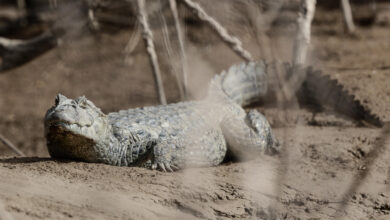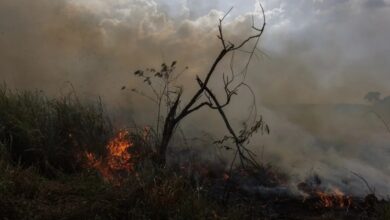Gran Chaco: the second largest forest in the world, in danger
Although the Amazon is on everyone's lips, the South American forest that follows it in size, and that treasures valuable biological and cultural diversity, is unknown to many people .

The ecoregion has a great biological and cultural diversity, so it is important to disclose the importance of its conservation. / Photo: Wikimedia – Ilosuna
LatinAmerican Post | Jorge Guasp
Listen to this article
Leer en español: Gran Chaco: el bosque amenazado que secunda en tamaño al Amazonas
The Gran Chaco encompasses several South American countries
According to the Fundación Vida Silvestre Argentina , in its 2005 Ecoregional Evaluation of the Great American Chaco , “The Great American Chaco is a forest ecoregion of exceptional biodiversity in which unique ecological processes occur. It extends in Argentina, Paraguay, Bolivia and in a small portion of Brazil, occupying more than 1,000,000 km² ”.
Protective measures of the Gran Chaco
The Gran Chaco ecoregion comprises two regions: the Chaco Seco and the Chaco Húmedo.
The Argentine Chaco Seco has, according to the Biodiversity Information System (SIB) of the Administration of National Parks of that country, an area of almost 50 million hectares, of which only 0.77% is effectively protected through natural areas of the national system.
The Chaco Húmedo, for its part, occupies almost 12 million hectares in Argentina , with 0.56% of that surface represented in protected natural areas (according to the SIB itself).
Regarding the protected natural areas of the different Argentine provinces that make up the Gran Chaco (Chaco, Santiago del Estero, Formosa, Santa Fe, Córdoba, San Luis, Salta, Tucumán, La Rioja, Catamarca, and Corrientes) , they are generally of small reserves, with little effective control on the ground, and a meager budget that restricts their protection.
The native forests of Argentina are protected by Law 26,331 of 2007, which promotes their conservation and protects them from possible changes in land use, such as clearing for the expansion of the agricultural frontier. According to this law, each province must carry out the Territorial Ordering of its Native Forests, in accordance with the conservation categories corresponding to the value of forest resources, and to the environmental services they provide.
Also read: Coyotes, a threat to South America
However, “the province of Salta issued Decree 2211 in 2010 (and its amending Decree 3136/2011), defining the procedure for the analysis of projects on a property scale. Decree 2211/2010 established that, for those projects of more than 10 and up to 300 hectares, it was not mandatory to carry out a public hearing or other participatory procedure, as well as the environmental impact assessment (EIA), departing from the provisions of the Article 22 of Law 26,331 and subverting its complementary powers, which must maximize the protection threshold and not undermine it ”(Property Recategorizations of native forests in Chaco: a painful déjà vu, Fundación Ambiente y Recursos Naturales, March 2019).
An ecosystem threatened by human activities
The Chaco Seco is a vast plain with a slight slope, covered with low forests and grasslands. These characteristics favor cattle ranching and clearing of vegetation for the practice of agriculture, activities that constitute its main threat, together with logging.
"The Gran Chaco is also home to approximately 250,000 indigenous people from around twenty different ethnic groups, who are involved in a bitter struggle to reclaim their ancestral forest lands, before they disappear" ( Lalini Pedris , June 2018, Mongabay).
“Almost a quarter of the Gran Chaco in Argentina and around a fifth in Paraguay, disappeared between 1976 and 2011; however, agricultural expansion continues, ”notes the report The Real Story About Soy (WWF , May 2018).
"Landsat satellite observations indicate that approximately 20 percent – 142,000 square kilometers (55,000 square miles) – of this forest became cropland or grazing land between 1985-2013. According to the non-profit organization Guyra Paraguay, between 2010 and 2018, more than 29,000 square kilometers (11,000 square miles) of the Gran Chaco was cleared for the construction of farms and ranches. Much of the deforestation took place in Argentina, ”according to the Deforestation in the Gran Chaco in Argentina, published by NASA Science in May 2020.
Also read: A carbon sink shrinks in the Arctic
The future of the ecoregion depends on the interaction between the public and private sectors
"Illegal deforestation, forest degradation, and uncontrolled land-use change jointly impact the Gran Chaco, the country and the region in different dimensions", expresses the Declaration for the future of the Chaco region 2019 (Gran Chaco Argentino Commitment 2030, a joint initiative of various environmental and social organizations), and concludes that "the change in the exploitation model requires the action of governments, the private sector and organized civil society".
Unlike other environments, more attractive for its exuberance and scenic beauty, the environmental and social value of the Chaco goes unnoticed by those who do not know its wealth. Therefore, it is essential to disclose its importance, its state of conservation and the threats it faces, in order to raise awareness and ensure that the second great South American forest does not succumb to human negligence.




